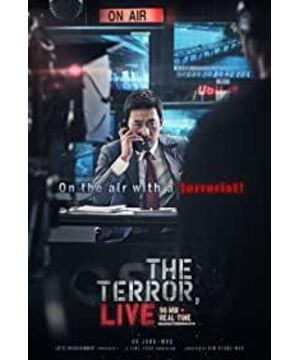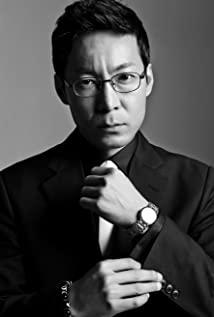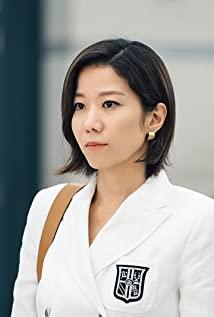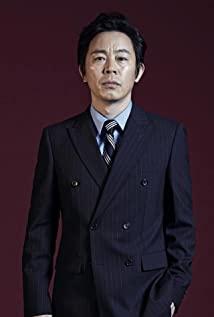The film runs through the process from hearing to vision and then to touch, from doubting in the broadcast studio, to watching the fire through the window, and finally to the disaster that comes to him. As a media worker, the protagonist has experienced a journey from illusion to reality. process, in which some characteristics of the medium and even the film are permeated.
At the beginning, we can clearly see that the frame is stretched and enlarged. At the same time, in the picture, the male protagonist wears sunglasses and turns a blind eye in the dim studio, opens the curtain and is shocked by the reality in front of him, and then brings it on. Eyes, full concentration, visually, this is a process of opening the eyes, the space in this process is from cramped and dim to open and transparent. In the story, the protagonist changes from a failed and unrecognized radio anchor (at the sound level) to a successful and much-anticipated TV anchor. As the saying goes, hearing is false, but seeing is believing. The essence of media authenticity.
As a result, we changed from an auditory distrust of the caller's arrogant speech to a visual trust. This belief comes from the TV screen on the one hand, and the confidence on the other from what the protagonist has seen with his own eyes—he sees through the window not far from the bridge being blown up. But this kind of truth based on vision is also limited. First of all, at the level of the TV screen, as Debord said, the landscape is a shield against the reality. far cry. As the film is designed, the protagonist cannot guarantee the truth of the news and his own personal position. The source of the news is purchased with money, and the news content of the anchor is subject to terrorists (bombs in the ears), government and police, anti-terrorist organizations, and radio bosses. Even his own professional ethics have been exposed, so it is impossible to guarantee the authenticity of the news on TV. The second is about what the protagonist sees. The location of the bombing of the bridge was not near or far, and it happened exactly where he could see. He could clearly see the disaster in front of him, and he could keep a distance from his own safety, regardless of the stakes, so he could not go there for the first time. Call the police to consider a small abacus for personal promotion.
Then there is the process from sight to touch. To add, Horror Live seems to fit some of the characteristics of a tabletop movie. For example, when shooting the protagonist for a live TV broadcast, the picture of the movie is often superimposed with the live TV picture. Rather than watching a screen world that simulates the illusion of reality (a feature of the movie), it is better to say that you are watching a flat TV screen. In desktop movies, what you see is a screen composed of luminous pixels (mobile phone, computer, TV), rather than a real three-dimensional world, so desktop movies always carry an anti-movie quality, which rejects three-dimensional Illusions are far from reality. But the desktop movie is not so resolute on the road of anti-movie. It is always full of interaction with reality and people. For example, in "The Internet Lost", the father is typing his daughter. First, he ordered to come back immediately, and then changed the idiom to be gentle. Where have you been, we can clearly feel a living person sitting in front of the screen and interacting with it. At the same time, desktop movies are often not satisfied with creating an electronic world, but enter the real world. For example, the father in "The Internet Lost" also has to turn on the camera to look at himself when he is alone at home; at the end of the story, he decides to Away from the world composed of computers and mobile phones, but to go to the field to search for his daughter, the movie screen is no longer a desktop but a real scene. In this process of transformation, the difference between tabletop and general cinema is dissolved. As another example, some viewpoints believe that Hitchcock's "Rear Window" is a prototype of a tabletop movie. With the help of a telescope, the characters stare at the open windows like a screen and get pleasure, but they can maintain a distant view. , a state of estrangement, just watching without participating in it. But in the same way, the treatment at the end is also a process of active participation. The hero witnesses the behavior of the suspicious man and decides to expose his conspiracy. His girlfriend bravely broke into the man's house and was threatened, so that the hero can no longer Indifferent, his own interests are also involved, so he must intervene in a "screen" that has nothing to do with him.
In the same way, back to "Terrorist Live", we look back at the various settings of the film, all of which highlight this sense of reality. Various orders and threats from the police, government, and TV stations are related to the hero's reputation and career, and the life of the lover. The broken bridge made him no longer able to watch the fire from the other side of the river. The bomb in his ear and the police officer who was killed made the incident a problem of life and death. The appearance of terrorists made the protagonist face the truth. In the end, the film exaggerated (although it was not realistic, but in order to deepen the theme), so that the building broke through the studio where the protagonist was located. The live TV hall has finally become an open space that can contact the outside world. The closed studio was smashed through, and the media and landscape carefully created by people were completely destroyed and turned into broken building fragments. The protagonist finally chose to give up what people had. To maintain all illusions, choose to destroy.
Spatially and meaningfully, the film runs through an opposing group of ascending and descending. The studio is in a high-rise office building, and terrorists are a threat from the bottom. The bridge bombing incident is a process of falling and collapsing, but for the protagonist, it is an opportunity to rise and develop. From the studio to the live TV studio is a process of going up the stairs. Using this opportunity, the relationship between him and his ex-wife emerges. After a turnaround, the career also has opportunities for promotion. Due to the need to appear on the screen, the male protagonist even changed into a leader's tie. And as the film emphasizes, this upward trend and opportunity is an imaginary vision, and the downward and falling trend in reality cannot be changed. Although several people on the broken bridge escaped from the falling car (rising), The visual emphasis is placed on the picture of the falling car, and finally the entire broken bridge completely collapsed, which also means the collapse of the protagonist's family support. At the end, the building collapsed, and the composition was completely tilted and crumbling from the previous stability. The young terrorist fell after struggling, and the protagonist was completely destroyed.
View more about The Terror Live reviews











